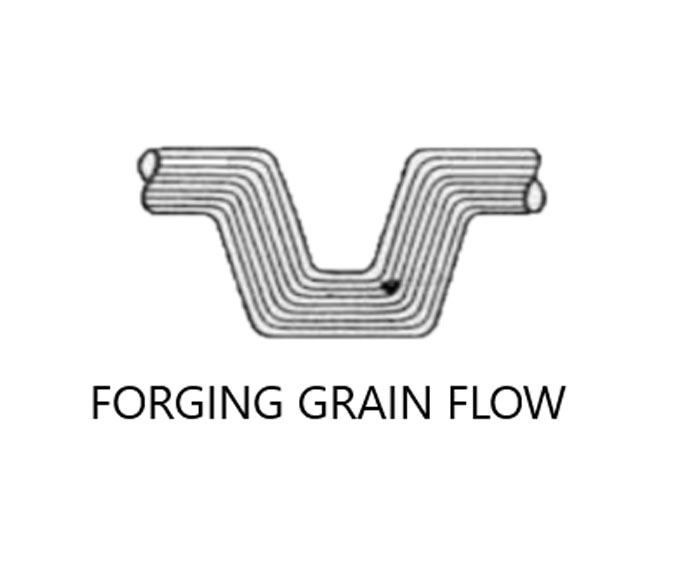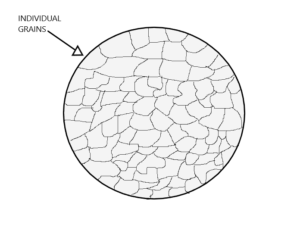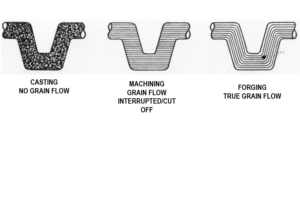Forging & Grain Flow


Compared to other manufacturing processes like machining and casting, forging is often considered superior. This is because forging improves grain structure and develops ideal grain flow in components. But, what exactly is grain flow and why does it matter?
In this article, we’ll highlight grain structure and how grains form in metal, how forging affects grain structure, and why grain flow in components is important.

The grain structure of a material refers to how the underlying lattice structure of a material solidifies when going from a molten to solid state. Depending on how long it takes the material to cool, as well as the stresses and strains applied during the cooling process, the resulting grain structures will differ significantly.
Each grain has its own unique orientation, and the areas between grains are known as grain boundaries.
When a metal material solidifies from a molten to a solid state, a unique grain structure is formed based on cooling time, stress, and strain. If this metal material then undergoes cold working, its shape is permanently deformed, or changed, causing dislocations within the grain structure of the material.
These dislocations are small “slips” in the material’s lattice structure that change how the metal changes shape and deforms when under stress or strain. Even though these dislocations and the underlying grain structure of metal can only be seen under a powerful microscope, many dislocations are often present after a metal material is cold worked and formed.
Grain flow refers to the directional orientation of the grains in metal during deformation.
Grain flow directly affects the material’s mechanical properties since it determines the direction that the underlying grains push or pull when under stress or fatigue.
Cracks are more likely to occur parallel to the grain structure, so stress should be perpendicular to the grain structure. “Ideal” or “optimum” grain flow means that direction of the grain structures aligns with the stress requirements of the forged component.

Forging produces components in which the grains are deliberately aligned in the direction of maximum strength, resulting in exceptional fatigue and impact resistance.
Before the forging process, stock has to be pre-worked to remove voids from the metal after it solidifies from a molten state. Pre-working also elongates individual grains and creates longitudinal alignment in the billet that’s critical for determining a component’s resistance to fatigue and impact.
During the forging process, the metal then undergoes controlled deformation under (typically) elevated temperatures. The benefit of forging, when compared to other manufacturing processes, is that grain flow can be controlled. No matter how complex the part’s geometry is, every area of that component will have continuous grain flow.
To gain a better understanding of the superiority of forged components, let’s take a look at two additional manufacturing processes: machining and casting.
Machining is typically performed on a pre-worked billet that already has grain flow. However, when that billet is machined, it often means that the unidirectional grain flow pattern has been cut, and its contour has changed. Machining exposes the grain ends and makes the material more prone to sensitive stress, corrosion cracks, and fatigue.
A casted component does not have uniform grain structure, grain flow, or directional strength. During the casting process, slurry is poured into a mold, and as this slurry cools, dendrites form, which eventually turn into grains. These grains are not uniform, as some may be small, large, coarse, and/or fine, which results in grain boundary voids. When there are voids in a manufactured component, this means that that component will have very little impact or fatigue resistance.
There are many benefits of choosing forged components over castings or machined parts.
If you have questions about the forging process or want to learn more about the benefits of forging, reach out to our experts at Trenton Forging. Founded in 1967, we’re an American forging manufacturer specializing in impression die forging. We can produce both symmetrical and asymmetrical components from steel, stainless steel, and steel alloys.
Visit our website to learn more about our capabilities, or contact us today to speak to one of our team members.